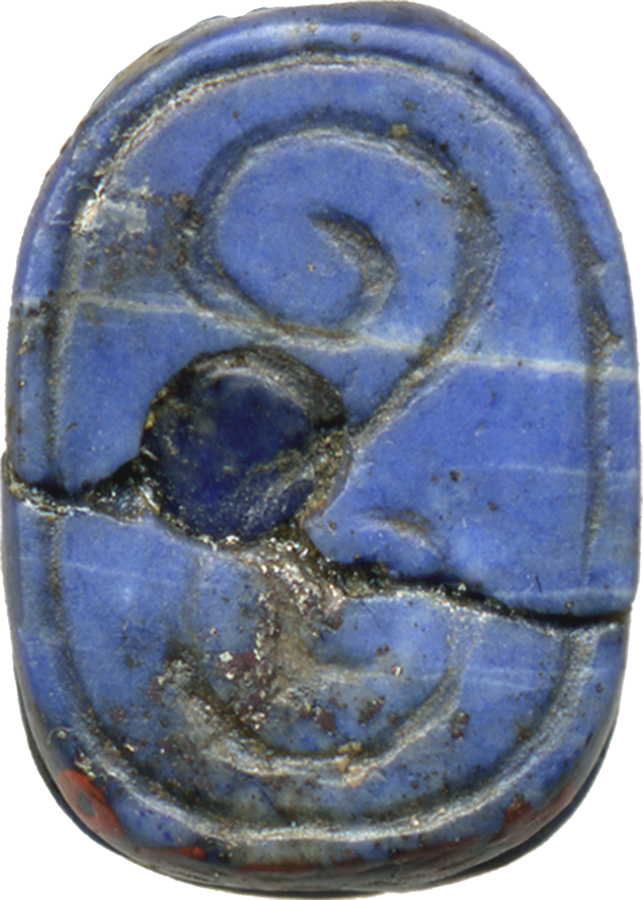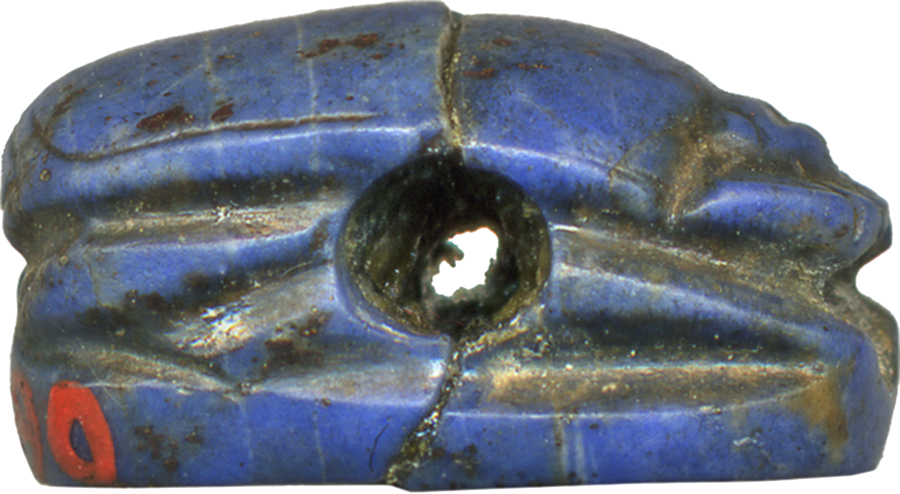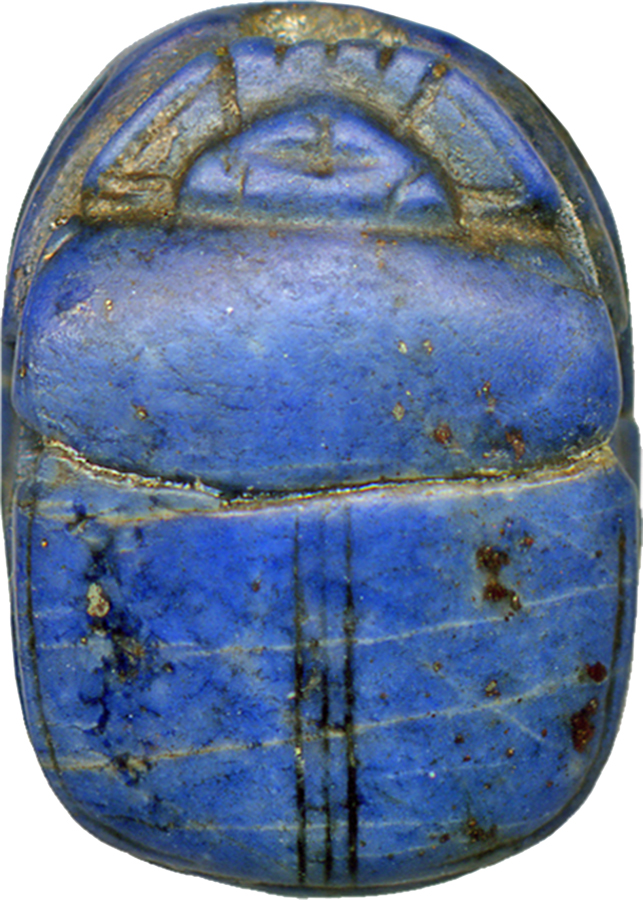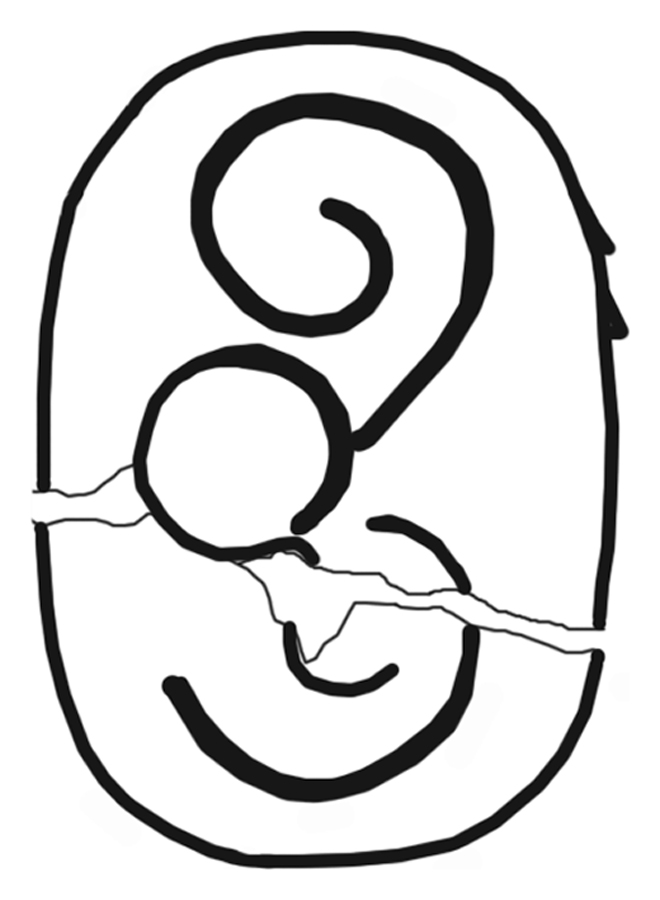Scarab with Sprial Scroll Pattern
(Ancient Egypt and Nubia )
This lapis lazuli scarab has a flat underside with a vertically arranged design of spiral scrolls. The scrolls are arranged below each other and both face with their open parts to the left. The design of the back of the scarab is detailed with fine incised lines, regular line flow, and almost balanced proportions. The workmanship of the scarab is slightly rough and the piece is simply made.
The scarab functioned as an amulet with a regenerative connotation and was originally mounted or threaded.
The bottom design was executed after the repair of the scarab. The height of the scarab makes it likely that it was originally created as inlay for a finger ring. Later the scarab was reused, and the second latitudinal hole was drilled.
Provenance
Provenance (from the French provenir, 'to come from/forth') is the chronology of the ownership, custody, or location of a historical object. Learn more about provenance at the Walters.
Henry Walters, Baltimore, [date and mode of acquisition unknown]; Walters Art Museum, 1931, by bequest.
Exhibitions
| 2006-2007 | Daily Magic in Ancient Egypt. The Walters Art Museum, Baltimore. |
Geographies
Egypt (Place of Origin)
Measurements
H: 5/16 x W: 3/8 x L: 9/16 in. (0.8 x 1 x 1.4 cm)
Credit Line
Acquired by Henry Walters
Location in Museum
Not on view
Accession Number
In libraries, galleries, museums, and archives, an accession number is a unique identifier assigned to each object in the collection.
In libraries, galleries, museums, and archives, an accession number is a unique identifier assigned to each object in the collection.
42.390








